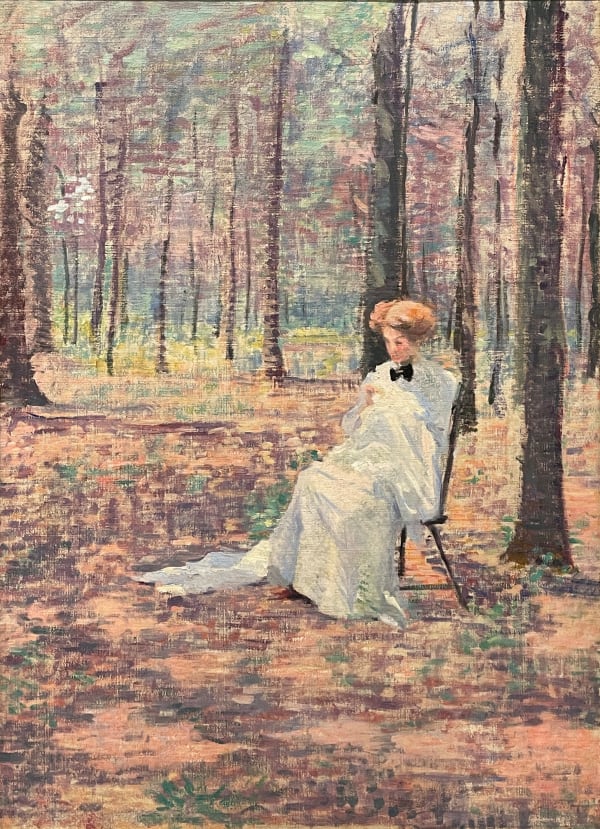Works
Biography
Robert Reid was born in Massachusetts in 1862. He studied at Phillips Academy and the Boston Museum School. In 1884 he left for New York to study at the Art Students League, within a year he grew antsy and left for Paris to attend the Academie Julian. He returned to the states in 1889.
In 1897 Reid became one of the founding members of the Ten American Painters, a group of Impressionists who rebelled against traditionalism; exhibiting together for twenty years. Reid completed numerous murals over the course of his career, including commissions for the Chicago World's Columbian Exposition in 1892; the American Pavilion at the 1900 Paris Exposition, the Fine Arts Building at the Panama-Pacific Exposition in San Francisco in 1915; and in New York at St. Paul's Roman Catholic Church, the Imperial Hotel, the Fifth Avenue Hotel, many private residences and even an ocean liner.
In the early 1920s, Reid moved to Colorado Springs where he joined the faculty of the Broadmoor Academy. He taught here from 1920-1927 and was instrumental in establishing and defining the academy. During this time, he focused more on portrait commissions, "creating what he called 'portrait impressions' by quickly painting in only the essential forms and features in broad, vigorous brush strokes." Reid's impressionist style consisted of high-hues, values and little contrast of lights and darks.
In 1927, Reid was partially paralyzed by a stroke and spent the last two years of his life in a New York State sanitorium where he learned to paint with his left hand. His work is included in the permanent collections of many public institutions. Reid was a member of the Society of American Artists and the National Academy of Design (Associate, 1902; Academician, 1906).
In 1897 Reid became one of the founding members of the Ten American Painters, a group of Impressionists who rebelled against traditionalism; exhibiting together for twenty years. Reid completed numerous murals over the course of his career, including commissions for the Chicago World's Columbian Exposition in 1892; the American Pavilion at the 1900 Paris Exposition, the Fine Arts Building at the Panama-Pacific Exposition in San Francisco in 1915; and in New York at St. Paul's Roman Catholic Church, the Imperial Hotel, the Fifth Avenue Hotel, many private residences and even an ocean liner.
In the early 1920s, Reid moved to Colorado Springs where he joined the faculty of the Broadmoor Academy. He taught here from 1920-1927 and was instrumental in establishing and defining the academy. During this time, he focused more on portrait commissions, "creating what he called 'portrait impressions' by quickly painting in only the essential forms and features in broad, vigorous brush strokes." Reid's impressionist style consisted of high-hues, values and little contrast of lights and darks.
In 1927, Reid was partially paralyzed by a stroke and spent the last two years of his life in a New York State sanitorium where he learned to paint with his left hand. His work is included in the permanent collections of many public institutions. Reid was a member of the Society of American Artists and the National Academy of Design (Associate, 1902; Academician, 1906).
Enquire

